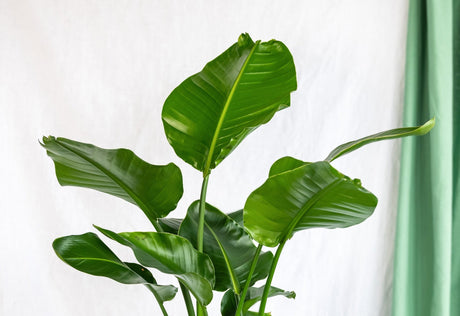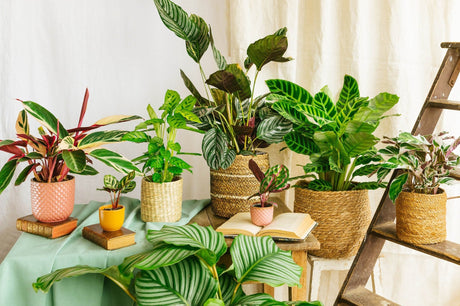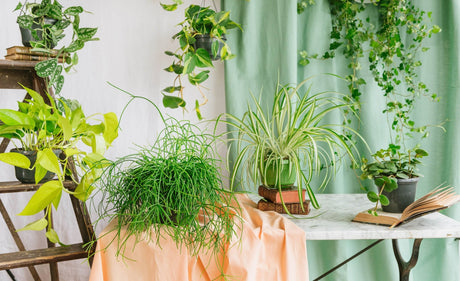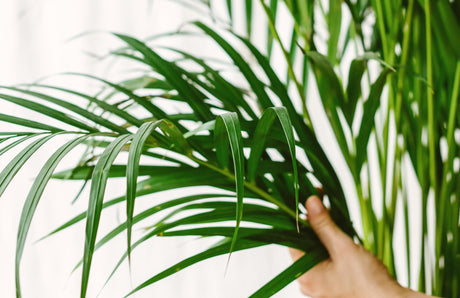Dieffenbachia is distinguished by its large and elegantly drawn leaves, which often feature bold patterns in cream, white and green. These spear-shaped leaves give the plant a graceful appearance and attractive, making it a perfect choice for plant lovers looking for decoration single interior.
Among the plant gems are two varieties that captivate with their uniqueness:
The Dieffenbachia Compacta which distinguished by its size modest and elegant bearing. Its leaves richly coloured feature a palette of greens deep, accented with patterns creamy.
The Dieffenbachia Reflector that stands out for its leaves stately. Its dimensions more generous make it a focal point of any room, bringing a lively and captivating presence to the environment.
1. Watering Dieffenbachia
Proper watering is essential to maintain the health and thriving of your Dieffenbachia, an attractive and elegant indoor plant. As a tropical plant, the Dieffenbachia has specific needs in terms of soil humidityand watering.The key approach for watering Dieffenbachia is to maintain a balance between keep the soil slightly moist without it becoming soggy. Water when the layer upper of substrate (about 2-3 centimeters) starts to dry out.
Tip : Iinsert your finger into the ground to approximately 2-3 centimeters depth. If the soil is dry at this level, it is time to water.Avoid overwatering, as the roots of Dieffenbachia are susceptible to rot.
2. Watering techniques
Watering from below
Place the pot in a saucer filled with water and let the plant absorb the water by capillary action through the drainage holes. This avoids over-wetting the foliage and helps prevent rot problems. Once the substrate is sufficiently moistened, empty any excess water into the saucer.Deep watering
When you water, be sure to completely saturate the soil. Water slowly and evenly until water begins to flow out of the drainage holes. This ensures that the entire root system receives adequate hydration.3. The exhibition of the Dieffenbachia
Dieffenbachia thrives in bright indirect light. Avoid direct exposure to sun, as the rays direct can burn the leaves delicate and cause stains. Place your plant near a window with a light veil or curtain to diffuse the light and create a light soft and filtered.Avoid placing your Dieffenbachia in very dark areas or away from any light source. A lack of light can lead to excessive stretching of the stems and weakness general of the plant.
4. When should I repot my Dieffenbachia?
Repotting of Dieffenbachia is generally recommended every 2 to 3 years, in spring or at early summer, when the plant enters its phase of growth active. Spring and early summer are the best periods for repot your Dieffenbachia. At that time, the plant is full growing and will have a better chance of adapt quickly to your new potty. Avoid repotting during the fall and winter months, as the plant enters a phase of growth more slow.
The signs of a need of repotting:
Invasive Roots
If the roots start sticking out of the bottom of the pot or wrapping around the root system, it's a sign that the plant is cramped in its current pot.Slowed growth
If your Dieffenbachia is showing stunted growth, smaller than normal leaves, or if it seems less vibrant, it may indicate that its roots are cramped and it needs extra space to grow.Water overflow
If water finds it difficult to be absorbed by the substrate when watering and drains quickly through the drainage holes, this may indicate that the substrate has become compacted and that repotting is necessary.Substrate degradation
If the substrate in the pot seems degraded, compact or no longer holds water well, it's time to repot. A quality growing medium is essential to provide proper nutrients and drainage.Overloading the plant
If your Dieffenbachia has grown to a size where it seems too big for its current pot and its leaves are touching the edges of the pot, it's time to give it more space.5. What fertilizer should I use for my Dieffenbachia?
The choice of an appropriate fertilizer is important for feeding correctly your Dieffenbachia and promote a growth healthy and vigorous. Opt for a fertilizer balanced and complete, preferably designed for tropical houseplants.Application frequency
PDuring the active growth period, which is usually in spring and summer, fertilize your Dieffenbachia every 4 to 6 weeks. Reduce the frequency during the fall and winter months when the plant enters a slower growth phase.Dosage
Carefully follow the instructions on the fertilizer label for the recommended dosage. In general, it is better to under-fertilize slightly than to over-fertilize, as too much fertilizer can cause root burn.Slow Release Fertilizer
You can also opt for slow-release fertilizers, which provide nutrients continuously over a period of several months. This can simplify maintenance, but be sure to choose a fertilizer specially formulated for houseplants.6. How do I multiply my Dieffenbachia?
The Dieffenbachia can be multiplied by various methods, including the division of clumps, stem cuttings and layering propagation.Stem cutting
This involves cutting a healthy stem from the parent plant. Let the cutting dry out slightly, then plant it in a pot with potting soil. Water the cutting, place it in a bright spot out of direct sunlight, and keep the soil moist. Wait for new roots to develop, then the new plant will begin to grow from the cut cutting.Tuft Cutting
Involves separating a mature plant into several parts, each of which can be grown as a new plant. To do this, gently remove the plant from the pot and separate the sections by dividing the roots. Each section should have a few stems and roots. Then plant each section in an individual pot with potting soil, water them lightly, then place thePropagation by layering
Consists of encouraging the growth of new roots on a section of the plant while keeping it attached to the parent plant. To do this, gently incise a small section of the stem, wrap it in moist potting soil and cover it with clear plastic to maintain humidity. Wait for roots to develop, then cut off the rooted section and plant it in an individual pot. This makes it possible to create a new plant from part of the parent plant.7. Diseases of Dieffenbachia
Dieffenbachia is generally a plant hardy, but it can be prone to certain diseases if the conditions are not ideal. Here are some diseases common that can affect Dieffenbachia and how to manage them:Root rot
Root rot can occur due to excess moisture in the soil. Symptoms include yellowish leaves, wilting and an overall unhealthy appearance.Leaf spots
Leaf spots can be caused by fungal or bacterial infections, often due to excess moisture or water on the leaves.Fungal Diseases
Fungal diseases such as powdery mildew and gray mold can affect Dieffenbachia, causing a powdery white coating on the leaves or gray mold.Virus
Although less common, viruses can also infect Dieffenbachia, causing leaf spotting, distortion or a mosaic appearance.Pests
Pests such as spider mites, scale insects and aphids can attack the Dieffenbachia, causing leaf and plant damage.8. Delivery and receipt of your plant
- Your plant is dry
- Is your plant wet ? Let the potting soil dry.
- Should I repot my plant right away ? No ! Wait until next spring or for signs that your plant needs repotting.






